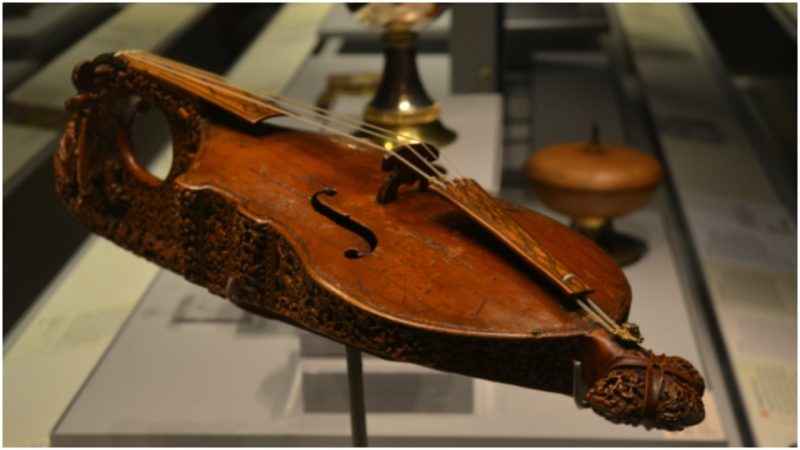The British Museum citole has been a riddle and the interest of many since it was first mentioned in 1776 by the music historian Sir John Hawkins in his A General History of the Science and Practice of Music.
As described by the British Museum, centuries after Hawkins’ mention, the instrument was called a viol, fiddle, violin, and gittern, until finally concluded as “citole”.
The citole was a rare object of its kind that survived from the Middle Ages and became a precious collectible for aristocrats who exhibited it privately before being acquired by the British Museum in 1963.
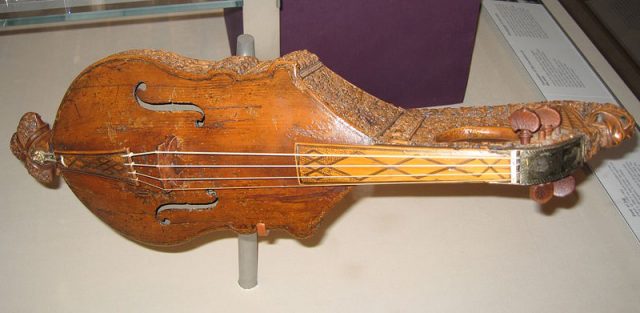
The British Museum’s official records regarding the history of the citole explain that the “plucked, stringed instrument” dates from the early 14th century and it was used in Europe between the 13th and the 14th century.
The citole is made of boxwood, displaying a delicately carved and picturesque woodland scene with medieval iconography. However, the instrument never kept its original form and was transformed into a violin in the late 16th century.
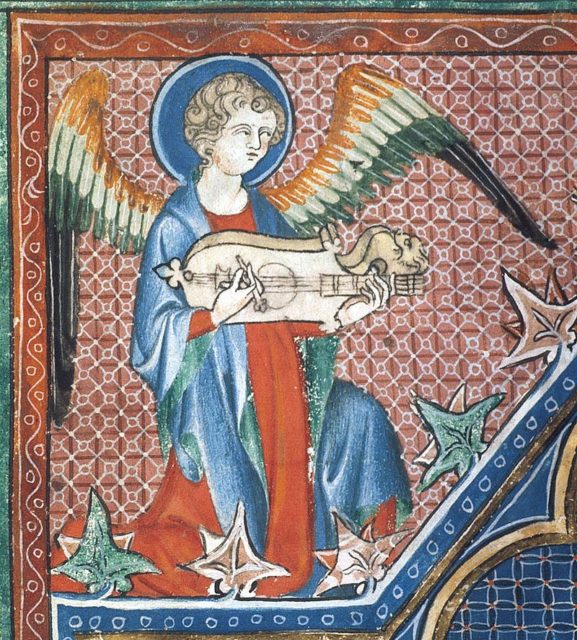
Since this period, it was associated with Queen Elizabeth I and Robert Dudley, Earl of Leicester, due to the addition of the arms of Elizabeth and Leicester on an inserted silver plate as well as the engraved initials and date 1578.
The interest in the citole as the instrument of the so-called “Virgin Queen” was high and the registers of today’s Victoria and Albert Museum (then called South Kensington Museum) show that in 1865 it was received on loan from the Earl of Warwick.
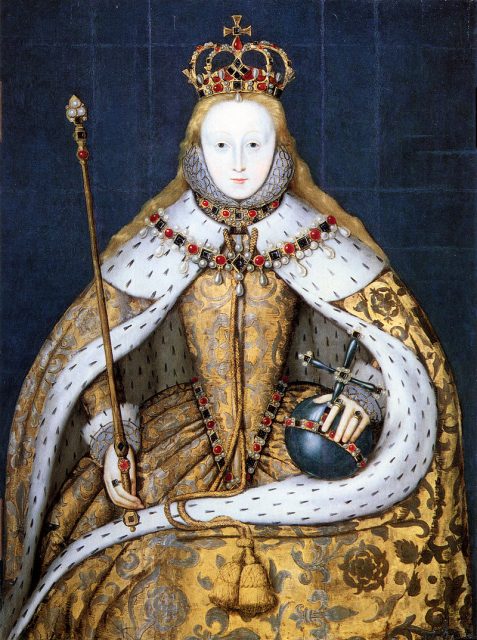
In addition, as the records of John Hawkins and Charles Burney have shown, the citole was sold at the auction of the late Duke of Dorset’s possessions after his death in 1769 and was thus exhibited in the music shop of Robert Bremner.
In 1806, it became part of the inventory of Warwick Castle where it was kept as part of the family ownership until it was acquired by the British Museum.
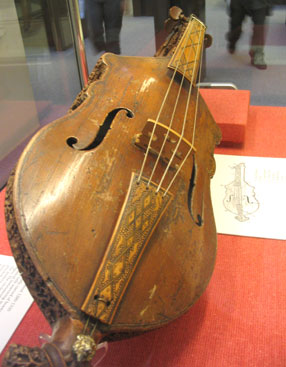
The citole was kept in the South Kensington Museum for 24 years and here it was photographed for the first time. In 1872, the instrument was shown at the Special Exhibition of Ancient Musical Instrument and in 1889 it was exhibited in New Gallery, London at the Exhibition of the Royal House of Tudor.
The citole was considered a precious instrument that attracted the attention of royals such as the Countess of Warwick who, in 1903 described the instrument as “Queen Elizabeth I’s artistically carved Viol presented by Queen Elizabeth to Earl Leicester that especially charmed the royal highnesses of Edward VII and Queen Alexandra,” referring to the opening of the 1904 exhibition at Fishmongers’ Hall.
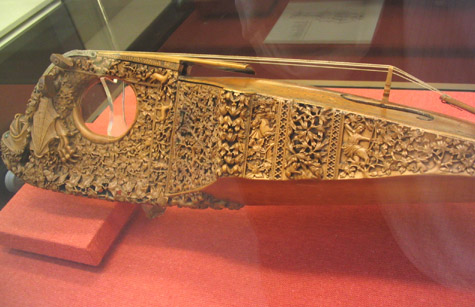
The medieval origins of the citole were first mentioned by the musicologist Canon Francis Galpin who in 1910 identified the instrument as a gittern and created the title “The Warwick Castle Gittern” which sealed the identity of the citole in the 20th century.
Related Video: 12 Ye Olde Insults we could use today:
https://youtu.be/A4lyl_MMb0k
Nevertheless, the Elizabethan context remained the most notable identity trait of the instrument which in 1935 launched the opening of the Eastbury Manor House (Museum of Barking), by being presented to the public at the Museum’s inaugural exhibition Queen Elizabeth and her Court.
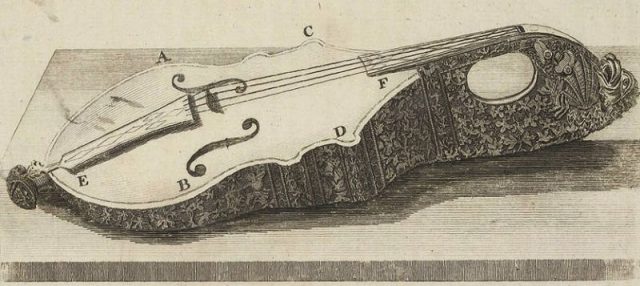
In 1951, the Galpin Society exhibition put effort into popularizing the Warwick Castle Gittern and began its pursuit through a collaboration with the Arts Council of Great Britain.
When in the citole was brought back to Warwick Castle in the mid-20th century, it was displayed in the Red Drawing Room.
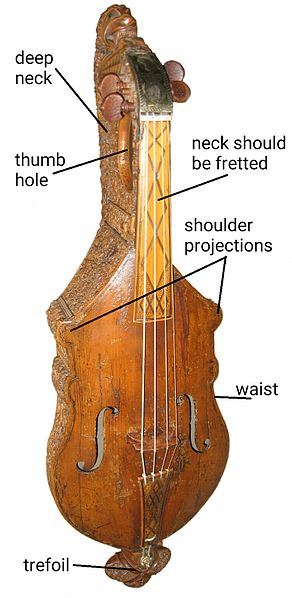
As reported by the British Museum, the citole was acquired by this institution in October 1963 with the financial support of The Pilgrim Trust and the National Art Collections Fund.
Moreover, the acquisition of this object would never be as successful without Rupert Bruce-Mitford, the keeper of the department of British and Medieval Antiquities. In addition, other parties also joined in the effort to make the British Museum the new home of the citole.
Reportedly, in 1963 Bruce-Mitford wrote to the Trustees of the British Museum that the seller of the citole was not interested in selling it anyone except to the British Museum.
Even the director of the Victoria and Albert Museum described the instrument as “a true British Museum object, due to the age and the history of the piece which make it a historical relic and antiquity in this category.”
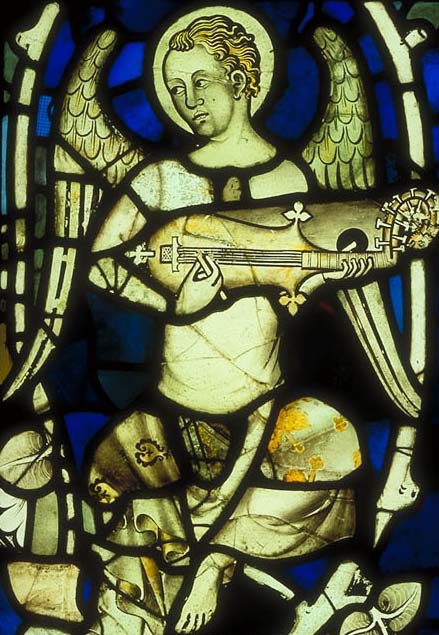
At the British Museum, the citole has been displayed in three galleries: firstly at the gallery of King Edward VII, then in the 1970s in a gallery dedicated to the history of medieval Europe, and in 2009 it was redisplayed at the opening of the Sir Paul and Lady Ruddock Gallery of Medieval Europe, where it was thematically exhibited in the section dedicated to medieval hunting and feasting.
Read another story from us: Some Species of Animals are Exclusively Owned by the British Crown
Most recently, the citole was shown in a 16th century setting, the Forest of Arden, for the British Museum exhibition Shakespeare: Staging the World in 2012.
